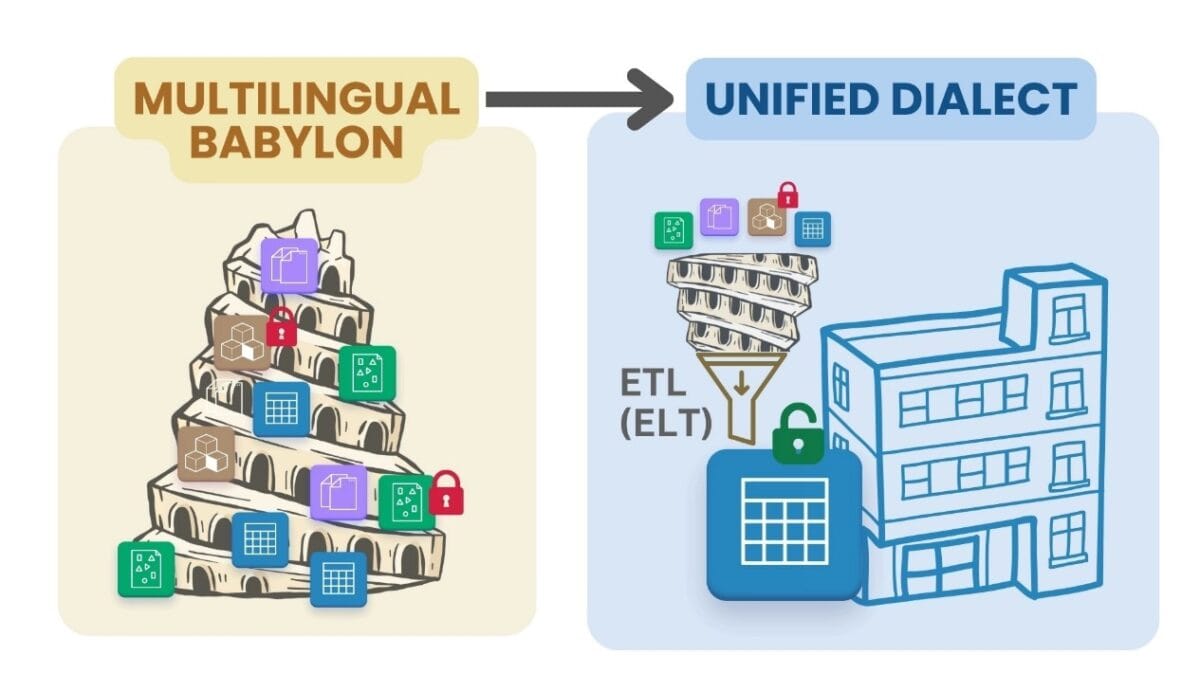Today, most companies face a difficult dilemma: approximately 80% of their daily business processes are based on traditional structured data. However, 80% of new information entering a company's systems and processes is unstructured. Moreover, the volume of unstructured data in organisations is increasing by 55-65% annually.
Ignoring unstructured data in automation processes can lead to significant gaps in the company's information landscape.

The 60% annual growth of unstructured data is causing problems in streaming information integration into business processes
In today's world of uncontrolled and avalanche of information movement, companies need to take a hybrid approach to data management that includes effective methods for handling all types of data.
The key to effective data management lies in the organization and classification of various data types “Babylon”, including unstructured, textual, and geometric formats, into semi-structured or structured data.
This process transforms a chaotic multitude of data into organised structures, for integration into systems, thereby facilitating decision-making based on. For IT and data managers, the primary challenge is to navigate through this complexity and establish structured systems that support data-driven decisions.

The main task of data management departments is to translate the Babylon of diverse data formats into the structured systems
This transformation process is not just a technical task; it is a critical step in ensuring that data serves its ultimate purpose of supporting strategic business decisions. IT and data managers must sift through and organize multi-format data to ensure that it is accurate, accessible and meaningful to the organisation. Their role is akin to that of translators, turning diverse data languages into a common dialect that can be understood and used by the entire company.
Among the various formats widely used today, open structured data has not only gained popularity but has also become a standard in the field of data processing.

















